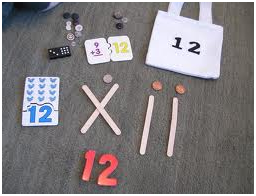
Sometimes kids are smarter than we give them credit for. According to this, when kids with learning disabilities are allowed to solve math problems on their own terms, in their own intuitive ways, they often figure out ways to do it that may not be “by the book”, but still arrive at the correct answer nonetheless.
“A study by Dr Lio Moscardini, in Strathclyde’s Faculty of Humanities & Social Sciences, found that children deal better with arithmetical problems if they can use their own intuitive strategies such as using number blocks, drawings or breaking an equation up into smaller, simpler parts- rather than being instructed in arithmetical facts and procedures.”
For example:
- Answering a question about how many children are on a bus after a group gets on by representing two sets of children with cubes, drawings or fingers and joining the sets together
- Splitting up the sum 48 + 25 by adding 40 to 20, then adding eight and five separately for the total of 73
- Using context and language and modifying the way a problem is phrased. In one question, a boy having 14 stickers and giving six away was changed to him giving away “six of his stickers,” allowing a pupil to follow the language of the problem to make sense of it
Often times we try to teach kids the “right” way to do things, and we don’t listen or pay attention to what their inner workings are and how they actually think. We are doing our best to impart our own hard earned wisdom, but if our two thinking modalities clash, then it can lead to nothing but frustration on both sides. This study was about kids with developmental disabilities, but I’ll bet that this idea can carry over to all kinds of children in general. Reminds me of a saying that I particularly like and often remind myself when I deal with people at work:
“Never tell people how to do things. Tell them what to do, and they will surprise you with their ingenuity.” – George S. Patton
Sorry, the comment form is closed at this time.